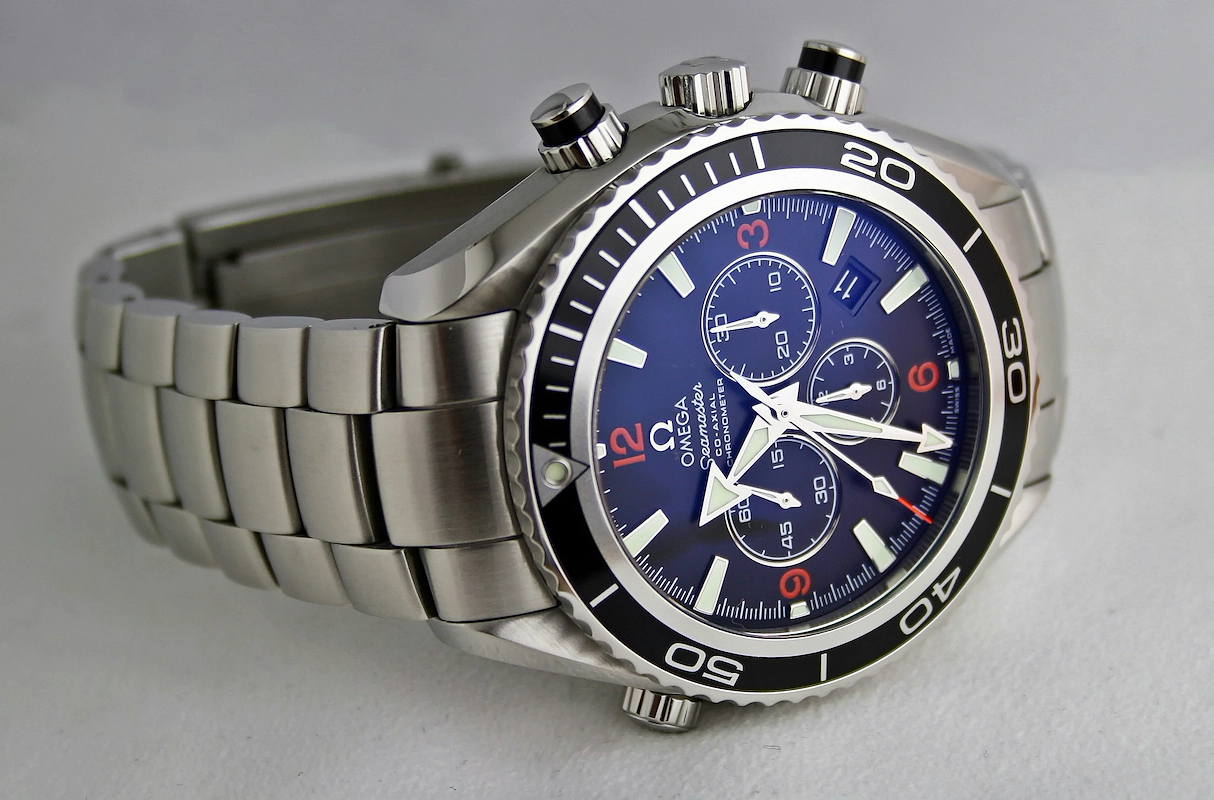Starting a watch company is a rewarding venture that combines precision craftsmanship and design with sharp business savvy. The global watch market is a multi-billion dollar industry, with steady demand for timepieces from luxury collectors, fashion enthusiasts, and everyday users.
This guide will take you through the practical steps of validating your business concept, building supplier relationships, acquiring inventory, and securing funding to help you launch a successful watch company in the U.S.
Step 1: Plan your business and validate your concept
Define your market niche
First, decide who you want to sell to. Are you targeting enthusiasts of vintage-style dive watches or professionals who prefer minimalist designs? A frequent misstep is to create a watch for everyone, which ends up appealing to no one. Get specific with your audience.
You can research trends on platforms like Instagram by following watch accounts and hashtags. Also, consider reports from market analysis firms like Statista to understand consumer demand and growth segments within the watch industry.
Analyze the competition
Once you know your niche, study the existing players. Use online analytics platforms like Ahrefs to see how competitors market themselves. Look at both microbrands such as Baltic and established companies like Tissot to understand their pricing, designs, and customer reviews.
Estimate your startup costs
A realistic budget is your foundation. Initial costs can range from $20,000 to over $70,000. This typically includes design and prototyping ($2,000-$5,000), a first inventory run of 100-300 units ($15,000-$50,000), and branding plus website development ($3,000-$10,000).
It might be tempting to use cheaper components to lower these figures, but poor quality movements or finishing can damage your brand's reputation before it even gets started. Investing in quality from day one builds trust.
Here are 4 immediate steps to take:
- Draft a one-page summary of your brand concept and target customer.
- Identify three direct competitors and document their product offerings and prices.
- Create a preliminary budget with line items for design, inventory, and marketing.
- Research two potential movement suppliers, for example, Sellita or Miyota.
Step 2: Set up your legal structure and licensing
Choose your business structure
Most new watch brands form a Limited Liability Company (LLC). This structure protects your personal assets from business debts. You can file with your state's Secretary of State office for about $100 to $500. An S Corp election is an option for potential tax savings later on.
Secure necessary permits and licenses
First, get a federal Employer Identification Number (EIN) from the IRS website. It is free and instant. You will also need a state seller's permit to collect sales tax. This is issued by your state's department of revenue and can take two to four weeks to process.
Locally, a general business license from your city or county is usually required. Expect to pay $50 to $400. A frequent mistake is incorrect origin labeling. The Federal Trade Commission (FTC) has strict rules for "Made in USA" claims, so review their guidelines carefully.
Here are 4 immediate steps to take:
- Register your business as an LLC with your Secretary of State.
- Apply for a free EIN on the IRS website.
- Research your state's requirements for a seller's permit.
- Check your city's website for business license application forms and fees.
Step 3: Secure your insurance and manage risk
With your legal structure in place, the next move is to protect your business. Insurance for a watch company addresses risks tied to high-value inventory and the product itself. It is a standard cost that shields you from significant financial loss.
Key policies to consider
Start with general liability insurance for basic business risks. More specific to your product, you need product liability coverage. This protects you if a watch component fails or a material causes an allergic reaction. Expect to pay $500 to $2,000 annually for a $1 million policy.
Your watch inventory is a major asset. Commercial property insurance protects your stock from theft or damage. A frequent oversight is not insuring goods in transit. For that, look into inland marine insurance, which covers shipments from your facility to your customers.
General insurers might not grasp your business's unique needs. You might want to consider specialists. Providers like Jewelers Mutual, Hiscox, and Chubb have experience with high-value inventory and e-commerce, which can lead to more appropriate coverage and rates.
Here are 4 immediate steps to take:
- Request quotes for a $1 million product liability policy.
- Create a detailed inventory list with wholesale values for a commercial property quote.
- Research a specialized insurer like Jewelers Mutual to understand their offerings.
- Ask potential insurers if their policies cover goods in transit to customers.
Step 4: Set up your workspace and source equipment
You do not need a large commercial space at first. A dedicated 150-square-foot area in a home office or spare room works for assembly and inventory. Check your local city ordinances for home-based business regulations, which are usually straightforward for e-commerce operations without foot traffic.
Gather your assembly tools
Your initial tool investment will be between $800 and $2,500. Some people try to save money here, but a cheap hand press can easily damage a dial or misalign hands. It is better to buy quality tools from the start from suppliers like Esslinger or Otto Frei.
Key items include a watchmaker's bench, movement holders, hand setting tools, a case back press, and a timegrapher to regulate movements. These will give you a professional setup for quality control and assembly. As you grow, you can consider leasing a small commercial workshop.
When that time comes, you might want to negotiate a one or two-year lease to keep your options open. For parts, most microbrands work with full-package manufacturers that have minimum order quantities of 100 to 300 units. This is often more efficient than sourcing individual components.
Here are 4 immediate steps to take:
- Map out a 150-square-foot workspace in your home.
- Price out a basic tool kit from a supplier like Esslinger.
- Research two full-package watch manufacturers and ask for their minimum order quantities.
- Review your city’s rules for home-based e-commerce businesses.
Step 5: Set up your payment processing
Choose your payment solutions
Your online store will need a payment gateway. Platforms like Shopify have their own solution, Shopify Payments, which uses Stripe. These gateways let you accept all major credit cards and digital wallets. Most charge a standard fee around 2.9% plus $0.30 per transaction.
Some new owners overlook these transaction fees, which can add up quickly and affect your profit margins. It is wise to calculate these costs into your pricing from the start. This prevents surprises later on.
Now, for selling in person at watch fairs or pop-up events, you need a mobile solution. For watch companies that need to accept payments on-site or on-the-go, JIM offers a streamlined solution. With JIM, you can accept debit, credit and digital wallets directly through your smartphone - just tap and done.
At just 1.99% per transaction with no hidden costs or extra hardware needed, it's particularly useful for managing cash flow at events. This rate is noticeably lower than the average commission rates from other payment solution providers.
Getting started is straightforward:
- Get Started: Download the JIM app for iOS.
- Make a Sale: Type the sales amount, hit sell, and ask your customer to tap their card or device on your phone.
- Access Funds: Your money is available right on your JIM card as soon as the sale is done - no waiting for bank transfers.
Here are 4 immediate steps to take:
- Research the transaction fees for Shopify Payments and Stripe.
- Compare those fees with the 1.99% rate from JIM for in-person sales.
- Choose a primary payment gateway for your online store.
- Download the JIM app to explore its features for future events.
Step 6: Fund your business and manage finances
Most founders start with personal savings. If you go this route, be clear about your limits. Another path is a loan from friends or family. Even with people you trust, you should always put the terms in a formal written agreement to avoid future misunderstandings.
Secure a loan
For external funding, an SBA Microloan is a strong option. These loans range from $500 to $50,000. Lenders typically look for a credit score over 680 and a detailed business plan. Interest rates usually fall between 8% and 13%.
Many new owners find they underestimate their working capital needs. For the first six months, plan to have 20-30% of your total startup costs as a cash reserve. If your initial investment is $50,000, this means having an extra $10,000 to $15,000 for marketing.
Manage your money
From day one, you should track every dollar. Set up a separate business bank account to keep your personal and business finances apart. Also, use bookkeeping software like QuickBooks or Wave to categorize expenses. This makes tax time much simpler.
Here are 4 immediate steps to take:
- Calculate your six-month working capital needs based on 20-30% of your startup budget.
- Check your personal credit score to see if you meet the typical 680+ requirement for an SBA Microloan.
- Open a dedicated business bank account.
- Sign up for a bookkeeping software account like Wave or QuickBooks.
Step 7: Hire your team and set up operations
Your first hires
In the beginning, you will likely be the sole operator. A frequent misstep is to hire full-time staff before revenue can support them, which can quickly drain cash reserves. Plan to manage design, marketing, and assembly yourself for the first year or until you achieve consistent sales.
Once order fulfillment consumes more than 15-20 hours per week, you might want to find a part-time Watch Technician. Their duties would include final assembly, quality control, and shipping. Expect to pay between $25 and $40 per hour. Experience is key, but a CW21 certification is a strong indicator of skill.
A freelance Digital Marketer can also be a valuable early addition. They can manage social media campaigns and online ads, which frees you to work on product development. A monthly retainer for a freelancer typically runs from $500 to $2,000, a smarter use of funds than a full-time salary early on.
Manage your workflow
As you start to delegate, you need a way to track tasks. You do not need complex management software at this stage. A simple project management platform like Trello or Asana is perfect to coordinate with a freelancer and keep your production schedule on track.
Here are 4 immediate steps to take:
- Define the point (e.g., 50 orders per month) at which you will seek a part-time technician.
- Draft a brief job description for a freelance digital marketer.
- Research watchmaker forums for technicians with CW21 certification in your area.
- Create a project board on Trello to outline your weekly operational tasks.
Step 8: Market your brand and acquire customers
Build your online presence
Your marketing should start with high-quality visuals. Many new brands stumble here with amateur photos. Invest in a professional photographer for your launch collection. Your Instagram feed is your digital storefront, so make it compelling with a mix of product shots and lifestyle images.
Paid ads on platforms like Instagram and Facebook can accelerate growth. Aim for a Customer Acquisition Cost (CAC) between $50 and $150. A typical e-commerce conversion rate is 1-2%, so track your metrics closely to ensure your ad spend is profitable.
Engage with the community
The watch community thrives on forums and blogs. Become an active member on sites like WatchUSeek. Share your brand story and engage in discussions without a hard sell. This builds trust. Brands like Baltic grew a loyal following this way before they even launched.
Collaborations are also powerful. You might want to partner with a watch blogger or a small YouTube reviewer. Offering a prototype for review can generate significant buzz. This often provides a better return than a small ad budget.
Here are 4 immediate steps to take:
- Create a three-month content calendar for your Instagram account.
- Join WatchUSeek and contribute to five discussions in your niche.
- Calculate your target CAC based on your watch's profit margin.
- Identify three watch reviewers on YouTube with under 50,000 subscribers to contact.
Step 9: Price your watches and set your strategy
Determine your pricing model
Most microbrands start with a cost-plus model. First, calculate your total landed cost per watch, which includes manufacturing, shipping, and import duties. Then, apply a markup. A standard retail markup is between 2.5x and 4x your landed cost.
An alternative is value-based pricing. This approach works well if your brand has a compelling story or a distinct design. Here, you set the price based on the perceived value to the customer, not just the cost of the components.
A frequent misstep is pricing too low to attract early buyers. This can signal poor quality and makes it very difficult to raise prices later. You might want to price higher and use introductory discounts instead.
Research competitor pricing
With a model in mind, analyze your competitors. Create a simple spreadsheet to track brands in your niche. For each, list their watch models, key specs like movement type and crystal material, and their retail prices. This gives you a clear market overview.
This analysis helps you position your watch. For example, if you offer a Swiss movement at a price point where Japanese movements are common, that becomes a strong selling point. It shows customers the tangible value you provide.
Here are 4 immediate steps to take:
- Calculate the landed cost for one of your watches.
- Set a target retail price using a 3x markup as a starting point.
- Create a spreadsheet to compare the prices and specs of three direct competitors.
- Decide if a cost-plus or value-based model best fits your brand.
Step 10: Implement quality control and scale your operations
Establish your quality standards
Your brand's reputation rests on consistency. Create a detailed quality control (QC) checklist for every watch you assemble. This should include checking the dial for dust, ensuring perfect hand alignment, and inspecting the case for any finishing flaws under magnification.
For performance, use a timegrapher to regulate each movement. A good target for a standard automatic movement is an accuracy of +/- 15 seconds per day. Also, research ISO 22810 standards to validate your water resistance claims.
Plan your growth triggers
Many new owners make the mistake of scaling production too fast. Instead, set clear benchmarks for growth. Once you consistently sell 75-100 watches per month, it is a solid indicator that you need a part-time technician to handle assembly and shipping.
When your business achieves a stable 40% net profit margin, you might want to reinvest those earnings. This could fund the development of a new watch model or increase your next production run to 500 units to lower your per-unit cost.
As you grow, spreadsheets for inventory will become cumbersome. Look into dedicated inventory management software like Katana to track components and finished goods more effectively. This prepares you for the next stage of your business.
Here are 4 immediate steps to take:
- Create a detailed quality control checklist for your assembly process.
- Research the testing requirements for the ISO 22810 water resistance standard.
- Set a monthly sales volume that will trigger hiring a part-time technician.
- Explore inventory management software like Katana to understand its features for future growth.
Launching your watch company combines craft with commerce. The key is patience; building a reputation for quality takes time, just like the watches you create. You have the roadmap, so take that first step with confidence.
As you connect with customers in person, managing payments should be simple. JIM turns your smartphone into a card reader, with no extra hardware and a flat 1.99% transaction fee. Download JIM and be ready for your first sale.















